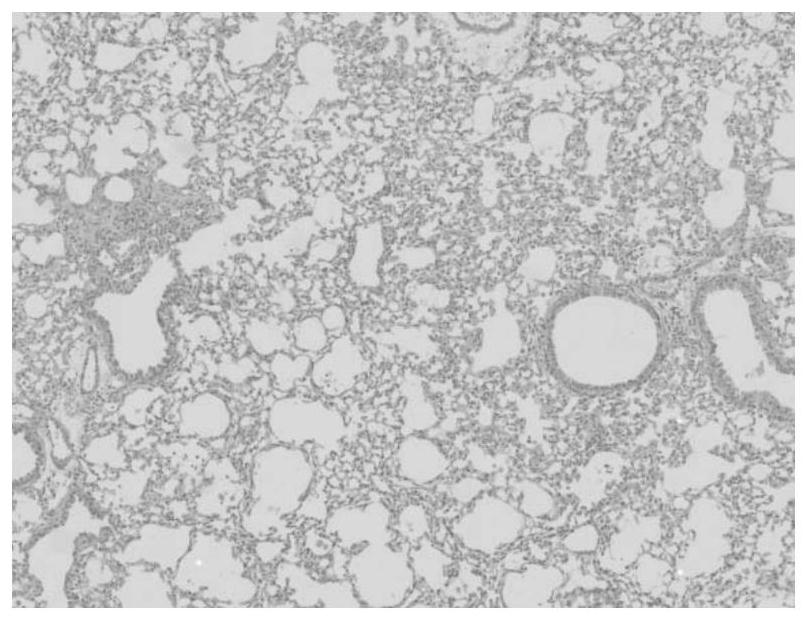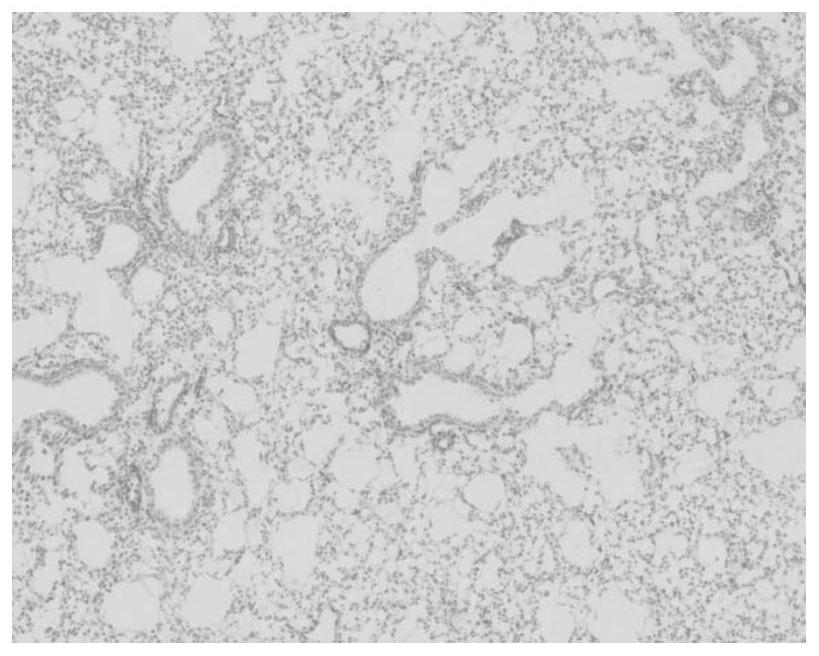Construction and application of a mammalian model of pulmonary fibrosis
A technology for mammals and pulmonary fibrosis, applied in the field of experimental zoology, can solve the problems of easy failure and difficulty in building animal models of pulmonary fibrosis, and achieve the effects of high success rate, low animal oral toxicity and great application potential
- Summary
- Abstract
- Description
- Claims
- Application Information
AI Technical Summary
Problems solved by technology
Method used
Image
Examples
Embodiment 1
[0020] Using 4-week-old mice of the C57BL / 6N strain, use an ultrasonic nebulizer to ultrasonically nebulize 1 mg / mL polyhexamethylene monoguanidine solution, and the concentration in the exposure box is about 10 mg / m 3 , the mice were exposed for 4 hours, once every other day, for three consecutive exposures.
[0021] After raising the mice for one month, the mice were dissected pathologically, and the lung tissue was stained with hematoxylin-eosin to observe the fibrosis lesions of the lung tissue. It was found that the lung tissue had fibrosis-like changes, the alveolar wall was thickened, and the alveolar collapsed. , uneven distribution, a large number of inflammatory cell infiltration, consistent clinical symptoms of pulmonary fibrosis.
Embodiment 2
[0023] Using 4-week-old Balb / c strain mice, inject 0.1 mL of 2 mg / mL polyhexamethylene biguanide solution into the airways of the mice using a tracheal infusion needle, inject once, and raise the mice for one month. The mice were dissected, and the collagen deposition in the lung tissue was observed using Masson's trichrome staining technique. It was found that there was obvious collagen deposition in the lung tissue, indicating that pulmonary fibrosis lesions appeared in the lungs of the mice.
Embodiment 3
[0025] Using 8-week-old SD rats, inject 0.2 mL of 3 mg / mL polyhexamethylene biguanide solution into the airway of the rats with a tracheal infusion needle, inject once, and after feeding the rats for one month, dissect the rats , using a-SMA antibody to stain the lung tissue of rats, observe the expression of lung tissue fibrosis markers, and find that the lung tissue fibrosis marker a-SMA is significantly expressed, indicating that pulmonary fibrosis lesions appear in the lungs of rats, the model The build was successful.
PUM
 Login to View More
Login to View More Abstract
Description
Claims
Application Information
 Login to View More
Login to View More - R&D
- Intellectual Property
- Life Sciences
- Materials
- Tech Scout
- Unparalleled Data Quality
- Higher Quality Content
- 60% Fewer Hallucinations
Browse by: Latest US Patents, China's latest patents, Technical Efficacy Thesaurus, Application Domain, Technology Topic, Popular Technical Reports.
© 2025 PatSnap. All rights reserved.Legal|Privacy policy|Modern Slavery Act Transparency Statement|Sitemap|About US| Contact US: help@patsnap.com



